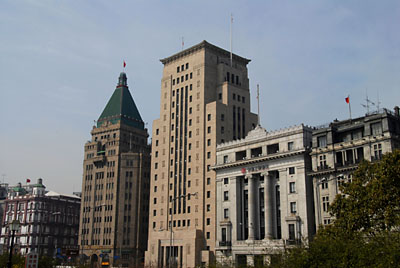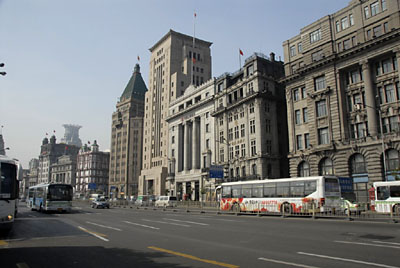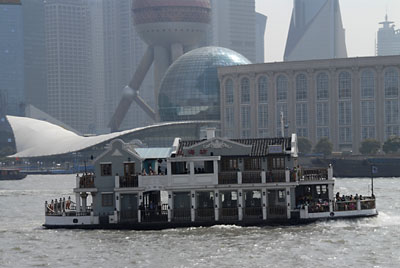Day 8, Thursday morning

Shanghai, The Bund

Photo by Sheryl Arnold
|
Day 8, Thursday morning |
|

|
On our last day in China, Thursday, March 23d, we spent the day in Shanghai. Our first stop of the day was the Bund, the well-known waterfront area along the Huangpu River.
After the Treaty of Nanjing in 1842, at the end of the Opium Wars, China was forced to provide trading concessions for some of the European countries and Shanghai was chosen to become one of the Treaty Ports. Shanghai grew quickly as an economic and financial center and the European companies located their buildings and settlements along the Bund.The Bund was to become known as the Wall Street of China because of its importance in international financial markets.
|
 Photo by Lucie Field
Photo by Lucie Field |
The buildings along the Bund reflect a variety of architectural styles. The buildings housed banks, hotels, consulates, restaurants and more. By 1949 the foreigners were gone and the buildings were used by the new government for other purposes. Now they are considered historic buildings. The government once tried to get the companies to return to their original buildings, but these companies were already located in newer, modern quarters.
|
 Photo by Gene Field
Photo by Gene FieldIn the background are the old historic buildings of the Bund. In the foreground is the promenade. |
 Photo by Gene Field
Photo by Gene Field |

|
Now Shanghai is experiencing an economic and financial rebirth and many international companies are trading with China; business is booming. Cranes are everywhere. A new section of the city - the Pudong - has been built across the river on what was once just a small island. Now it is covered with skyscrapers, very modern and very tall.
|
 Photo by Gene Field
Photo by Gene Field |
 Photo by Lucie Field
Photo by Lucie Field |
 Photo by Gene Field
Photo by Gene Field |
|

| 13 August 2006 | [China Trip index |Next] |